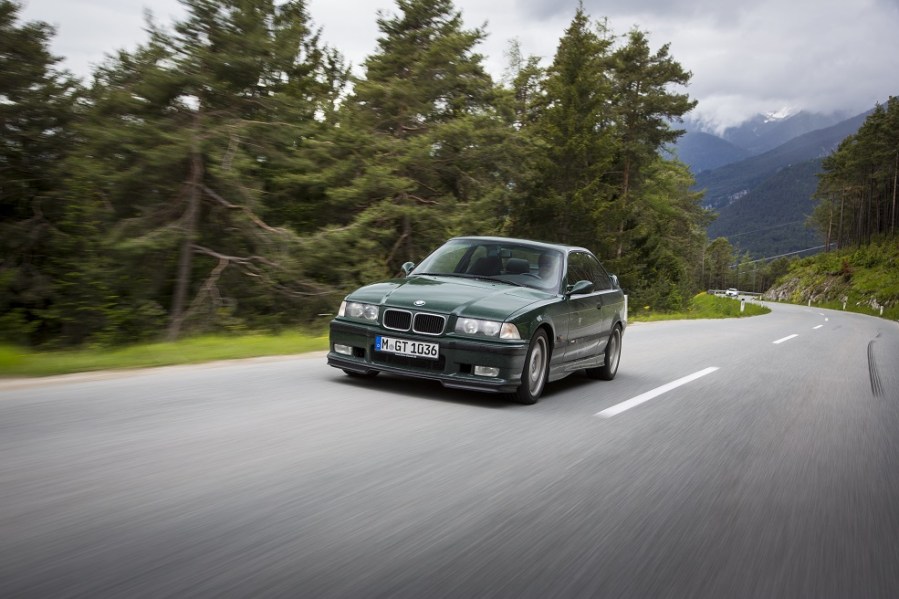The E36 M3 is establishing itself as a modern classic and is finally being appreciated by the BMW scene. With the second-gen M3 now 30 years old, this guide will help you buy a good one.
When the BMW E36 M3 was launched, it came in for a pretty rough ride. First of all, it was following on from the iconic E30 M3, so it had a hard, almost impossible act to follow. BMW had set the bar so high and anticipation was up for the new M3, that it had almost been set up to fail from the very beginning.
Secondly, the E36 was not BMW’s best effort in terms of build quality, and the general feelings of negativity that were being expressed towards the rest of the E36 family were naturally aimed at the M3, as well.
Finally, it was a very different car to its predecessor, and so those hoping for – and expecting – more of the same hardcore, pure driver’s car were rather disappointed by the softer and far more subtle offering that came along. The thing is, the BMW E36 M3 is a damn good car – very different to the E30 M3, but excellent in its own way and, even today, is an impressive machine to drive and a car that will really get under your skin in the best way possible.
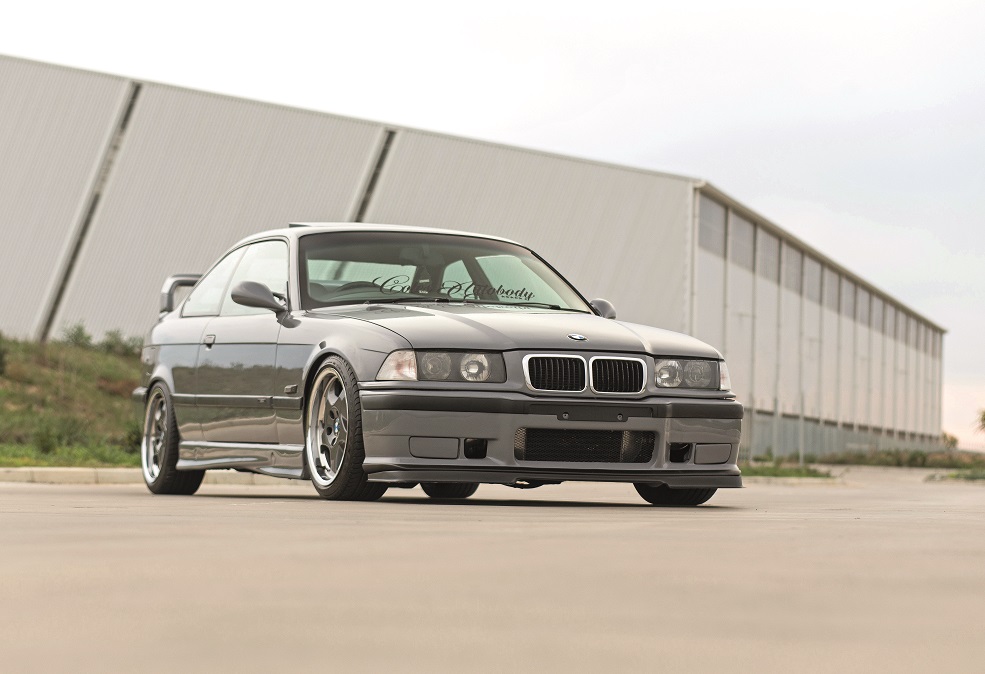
A brief history of the BMW E36 M3
After the hardcore, race-bred E30 M3, for the follow-up BMW opted for a softer, more subtle machine, aiming to create more of an everyday usable sports car, but one that was still a thoroughbred M machine. The 3.0 Coupé was introduced in 1992, with the Convertible arriving in 1994, and the Saloon joined the line-up later that year. The E36 was larger in every way than the E30 and also a fair bit heavier than its predecessor, and while it was a softer machine, it was also arguably more usable and a better all-round car.
The 3.0 was powered by the S50B30 straight-six (check out our M3 engines guide), based on the M50, and featured increased compression, a ported and polished cylinder head, individual throttle bodies, heavy-duty valve springs, single-Vanos, a free-flowing exhaust system and a dual-mass flywheel, making 286hp and 236lb ft of torque. The engine was mated to a five-speed ZF Type C non-overdrive gearbox with a 25% locking LSD. The M3 sat 31mm lower than the regular 3 Series with a wider track, firmer shocks and springs, thicker anti-roll bars and revised geometry, while the Saloon received a slightly softer setup.
There were three different wheel designs, all 17s – the 10-spoke ‘sunflowers,’ which were fitted to the Coupé, the twin five-spokes for the Convertible, with a forged version available as an option, and the M Contour II, which came on the Saloon. In terms of styling, there was very little to differentiate the M3 from lesser E36 models – there was a larger front air dam with a body-coloured mesh, sculpted side skirts and a rear diffuser, along with the now-iconic mirrors. The Convertible didn’t get the front lip spoiler, while the Saloon looks even more discreet, with no front splitter and more subtle side skirts. Inside, meanwhile, the Coupé came with the sculpted ‘Vader’ seats while the Saloon and Convertible had to make do with regular Sport seats. All three received a sport steering wheel with there being three different designs used over the years, black headlining and an M3-specific instrument cluster with red needles.
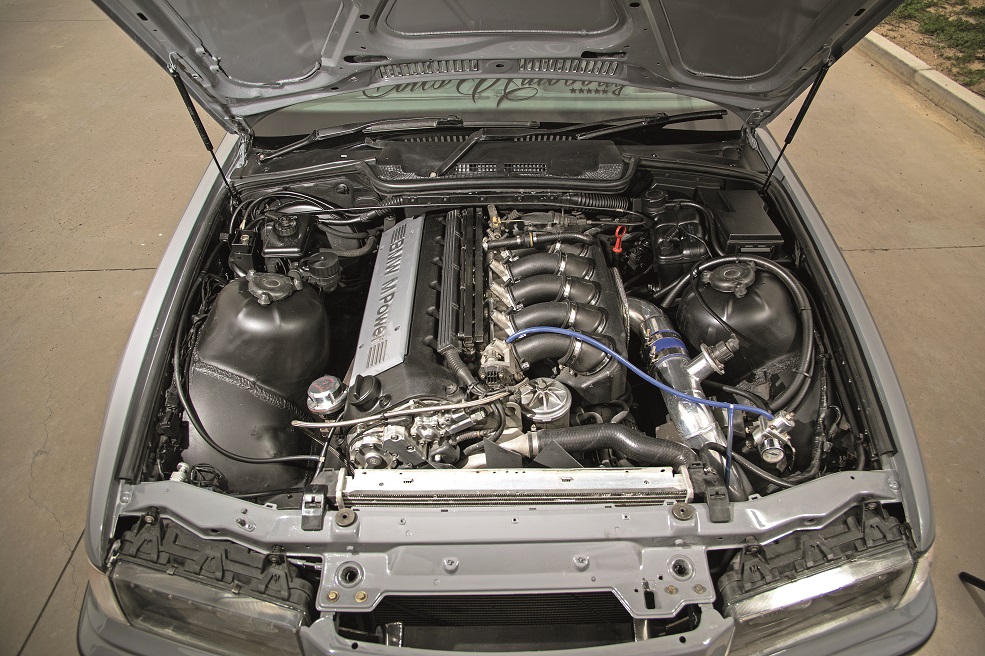
In 1995, BMW introduced the E36 M3 Evo, powered by the 3.2-litre S50B32 engine, with several revisions across the whole car. The most significant change came with the engine, which, along with its increased capacity, received a higher compression ratio, advanced MSS50 engine management, double-Vanos, lightweight pistons, graphite-coated con rods, larger intake valves, improved intake and exhaust systems and a secondary oil pump pickup. All this combined to increase power to 321hp while torque rose to 258lb ft, and this was the first BMW road car engine to make over 100hp/litre. A Getrag six-speed manual overdrive gearbox was fitted as standard, and, in 1997, SMG I became available, though this first version didn’t come with paddles on the steering wheel.
In terms of suspension, the M3 Evo received revised suspension geometry with increased front caster, firmer springs and dampers, stronger hubs, front anti-roll bars connected to the struts to reduce weight and a quicker steering ratio, and this time the Saloon and Coupé used the same suspension setup. The brakes were the same size as before, but the car came fitted with two-piece discs up front, while the wheel designs remained the same as before. Externally, the Evo came with black mesh in the front intake, aluminium doors on the Coupé and Convertible models, and clear indicators, while inside there was a new M-Cross cloth pattern for the Coupé, an M logo on the gear knob instead of a stripe, and leather door inserts when leather seats were specced.
Why you want a BMW E36 M3
The E36 is an excellent all-round performance machine. It’s still fast, even by modern standards, it’s ageing well, it’s got a great chassis and is a whole lot of fun to drive. It’s rapidly started being appreciated as the classic it is, and prices have been steadily climbing over the years. And, with three body styles to choose from and two different engines, there’s an E36 M3 for everyone.
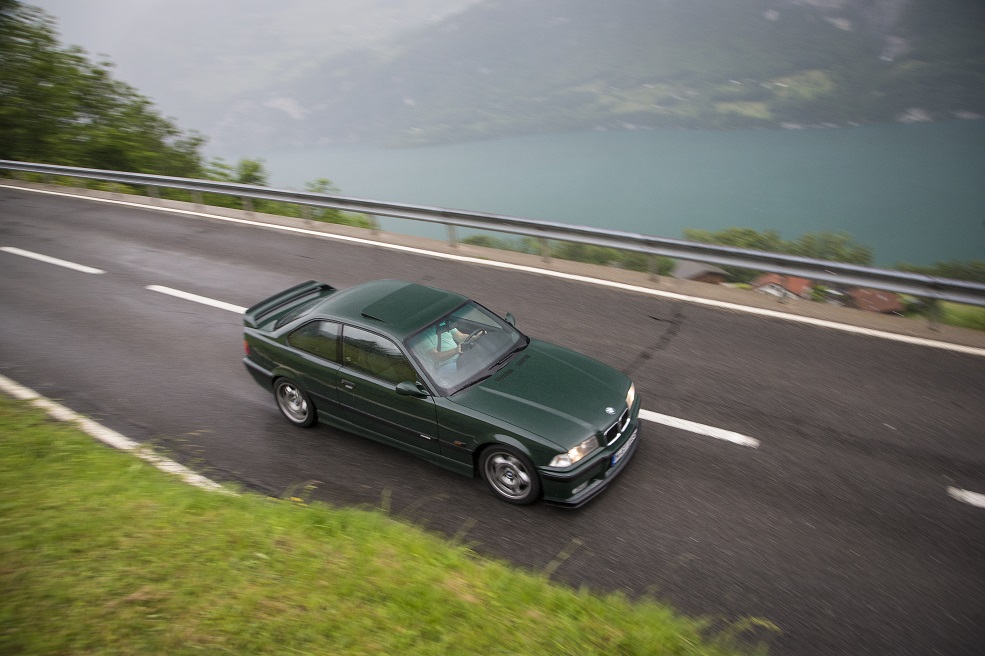
Special models
In addition to the regular 3.0 and 3.2 Evo models, BMW also produced a number of special editions, and we received three of them here in the UK. In 1995 the M3 GT Individual was introduced, based on the 3.0 model, with 50 cars produced exclusively for the UK market. While there were no mechanical revisions, the GT Individual came with several styling additions; it was finished in British Racing Green, featured adjustable front and rear GT spoilers, clear indicators and forged twin five-spoke wheels, along with an M strut brace under the bonnet. Inside there was Mexico green Nappa leather and anthracite Amaretta upholstery, graphite birds eye maple wood trim, including the gear knob, and chrome door handles.
With the 3.2, BMW produced two special editions for the UK market: the GT Imola Individual and the Special Edition Convertible. The former celebrated the end of E36 M3 production, and, once again, 50 cars were produced, all finished in Imola red. This model featured a front splitter, GT rear spoiler, and forged twin five-spoke wheels. Inside there was bi-colour Imola red leather with anthracite Amaretta suede bolsters, and red stitching on the steering wheel and handbrake lever. All cars came equipped with side airbags, an electric sunroof, electric front seats, electric rear quarters, and a Harman Kardon stereo. 25 Special Edition Convertibles were produced, all finished in Carbon black with Modena Natur Nappa leather and all equipped with an extensive list of standard equipment, including electric heated seats, PDC, Harman Kardon stereo and extended burr walnut wood trim.
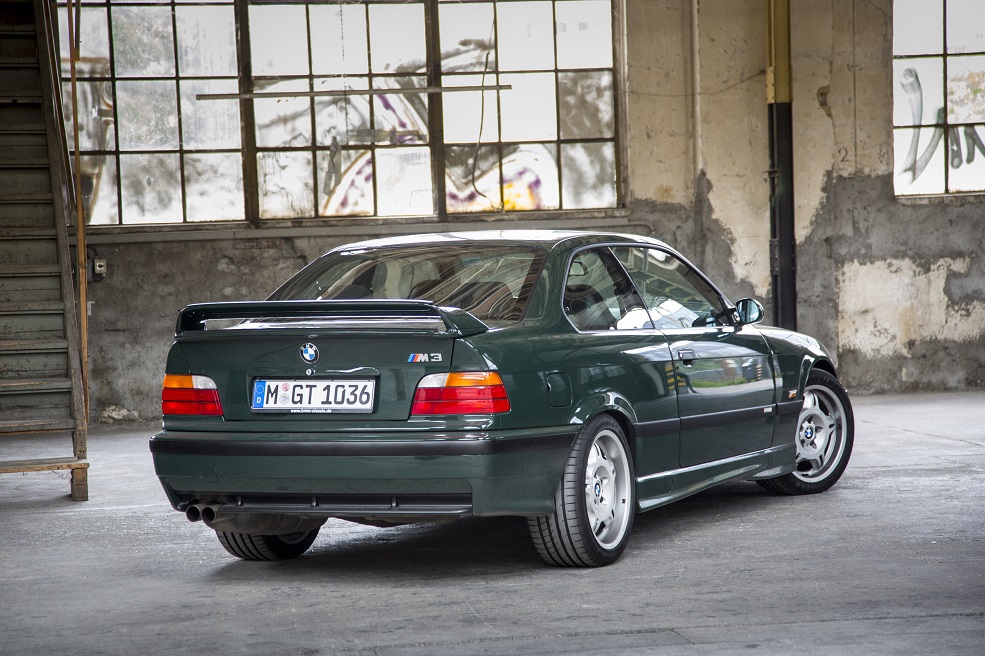
BMW E36 M3 prices
Many years ago, you could pick up an E36 M3 for around £2500, but those days are long gone. E36 M3 prices have been creeping up, however, it remains a relatively affordable prospect, and with it rapidly gaining modern classic status and becoming more appreciated, you can guarantee prices will only increase over time. Around £15,000 will give you a reasonable selection to choose from, with a couple of 3.0 and 3.2 Convertibles, along with a 3.0 Saloon popping up. Prices jump to around £18k from there, and that’s where you’ll find lower-mileage cars, mainly convertibles. £20,000 will get you a very nice 3.0 two-door, while 3.2 Evo Coupés sit around the £30k-mark.
What to look for on the BMW E36 M3
The E36 is 30 years old, so you’re going to have to expect a fair amount of age-related problems to deal with, and these were complex cars when they were launched, so there’s quite a lot that can potentially go wrong. The E36 wasn’t especially well-built, so that means that interiors do wear, and as most cars have covered more than a few miles now, be prepared for some general wear and tear. Rust is a big issue on the E36 and forms on the front wings, rear arches, jacking points, the bottom of the doors, and it can also occur around the boot area.
On both the 3.0 and 3.2 the Vanos can be problematic – less so on the 3.0, but the 3.2 double-Vanos is quite complicated, less reliable and more expensive to repair. However, there are rebuild kits available and numerous companies out there who can fix faulty Vanos, so it’s not a nightmare. Head gaskets can fail due to overheating, which is caused by the plastic radiator end tank cracking, the engine can spin its rod bearings, vacuum hoses split, MAF, lambda and throttle position sensors fail over time, and the correct valve clearances are essential for a happy and healthy engine. Air conditioning compressors and condensers fail, front wishbone ball joints wear, rear trailing arm bushes wear, rear subframes can crack, brake pipes corrode, and on the six-speed ‘box the second and third synchros wear.
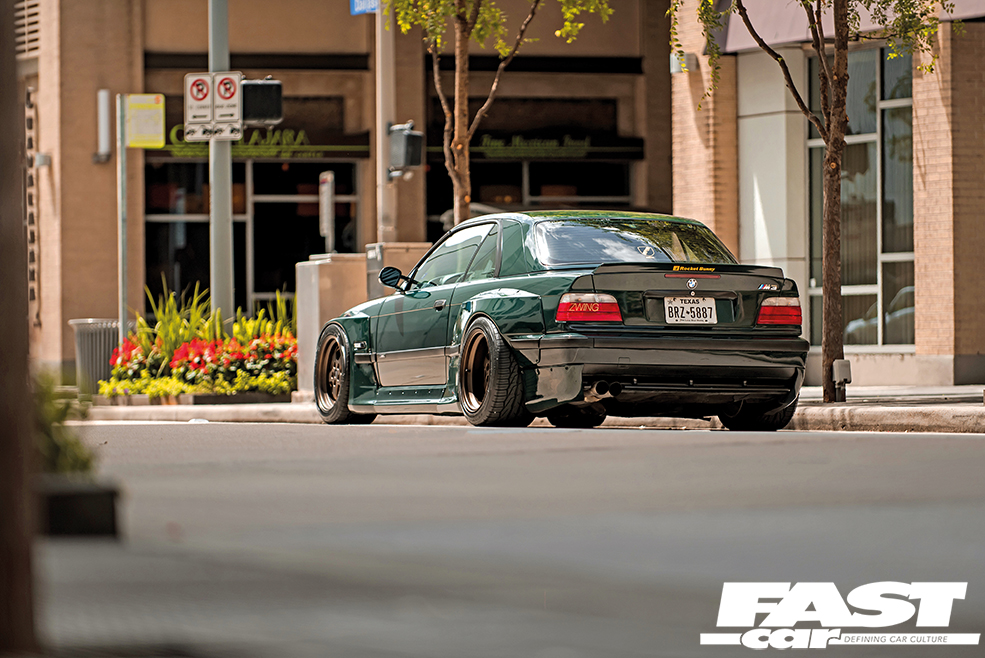
Verdict
The E36 M3 is no longer a cheap car and certainly not the cheapest way into M3 ownership, and while that’s bad news if you’re hoping to snag a bargain, it’s good news if you’re in the market for a good example. Back when they were cheap, they were being mistreated and run into the ground, but now people look after their E36 M3s, so the cars that are out there are more likely to be good ones.
It’s safe to say that the time of the cheap E36 M3 has passed, and prices are only likely to head in one direction for the foreseeable future. We’re not going to call it an investment piece, but buy the right car, and we can’t imagine you’ll lose any money. Above all else, people now appreciate the car and understand it better – taken in isolation after all this time, you can appreciate how good an all-round performance machine it is, and there’s an awful lot to love about the E36 M3. It’s a great car to drive, the subtle looks are appealing in their own way, the S50 is a great engine, and there’s plenty of modding potential, too. There are potential pitfalls and things to keep an eye out for and spend money on, but that just comes with the older car territory.
Whether you choose a 3.0 or an Evo, the BMW E36 M3 is a great car, an impressive M machine and is now becoming something of a classic. Combine that willing engine with an eager chassis, and you’ve got yourself a slice of M motoring at a great price.
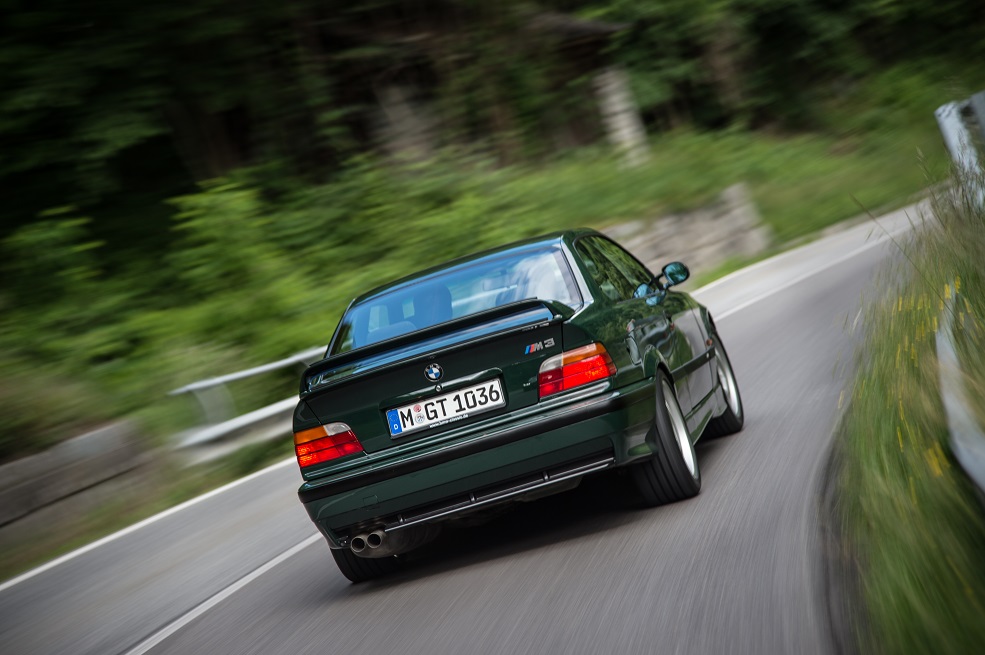
Tech Spec: BMW E36 M3
Engine: 3.0-litre straight-six S50B30/3.2-litre straight-six S50B32
Transmission: Five-speed manual, six-speed manual, six-speed SMG I
Power: 286/321hp
Torque: 236/258lb ft
0-62mph: 5.8/5.3 seconds
Price new: £32,450/£36,550
Guide from Performance BMW. Photos: Rowan Patrick, Andy Starkey, Rich Pearce, Luke Dulski.

